HERE ARE PHOTOS of Saint Rose of Lima Church, in De Soto, Missouri. The church is located about 47 highway miles south-southwest of downtown Saint Louis, in Jefferson County.
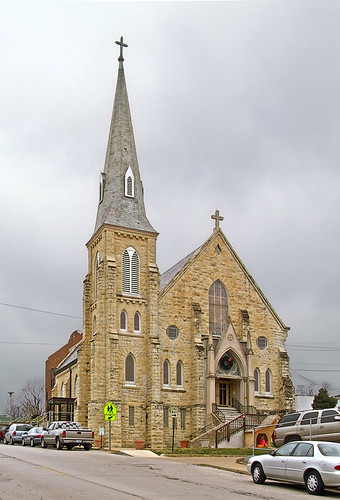
The parish dates from 1866.
The town is named after Spanish explorer and conquistador Hernando de Soto (ca. 1496/1497 - 1542), the first European to discover the Mississippi River, and who may or may not have explored this area.
The area which is now Jefferson County was sparsely settled in colonial times; and the first settler here was Isaac Van Metre, who built a cabin in 1803. De Soto's fortunes grew with the construction of a depot of the Iron Mountain Railroad in 1859, and the town now has a major rail car repair facility. De Soto incorporated as a city in 1869. Click here for a history of the town.
The town is built along Joachim Creek, named after the father of the Blessed Virgin Mary.
De Soto had the nickname "Fountain City" due to its artesian springs. One such artesian spring has the unfortunate location of being underneath the foundation of the church.
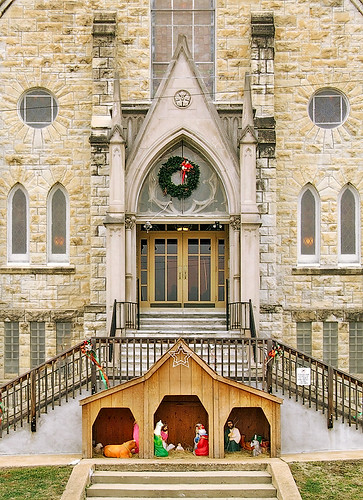
These photographs were taken on January 13th, 2008. Many thanks to Father who told us some details about the church.
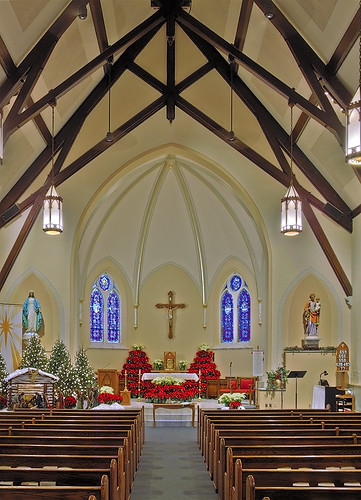
The altar was decorated for the season of Christmas.
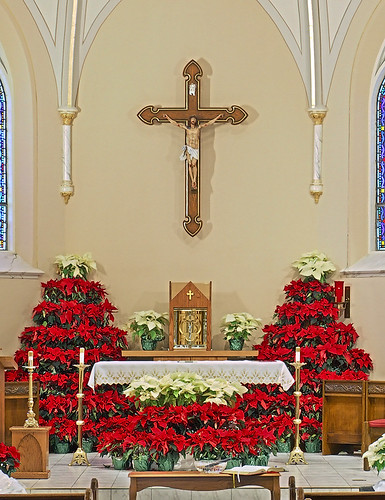
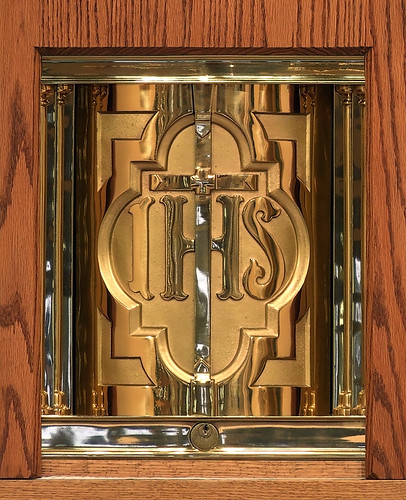
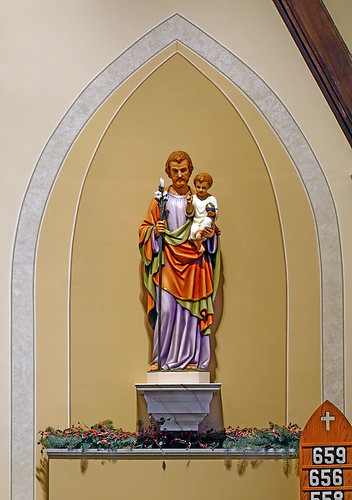
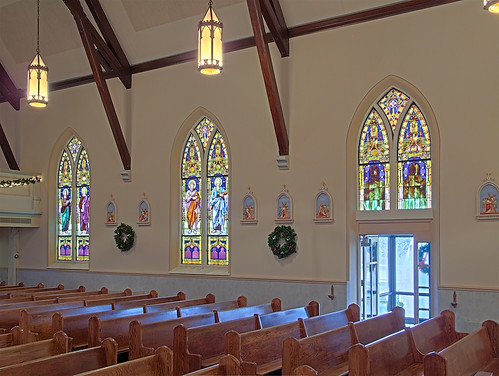
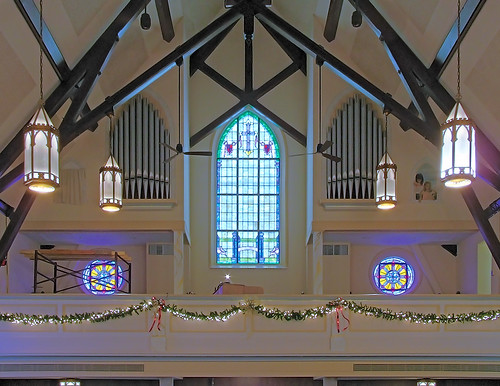
This church has suffered from various natural hazards, including tornado damage.
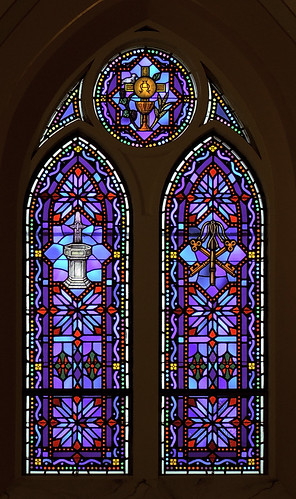
Stained glass window depicts the Eucharist, a baptismal font, and the Keys of Peter.

Stained glass window of Saint Rose and Saint Thérèse of Lisieux; the door below leads through an enclosed walkway to the confessional, constructed as separate building from the church.
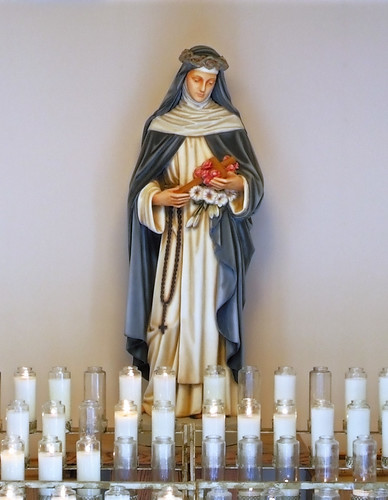
Statue of Saint Rose of Lima (1586-1617), the first saint born in the Americas. "If only mortals would learn how great it is to possess divine grace, how beautiful, how noble, how precious. How many riches it hides within itself, how many joys and delights!"
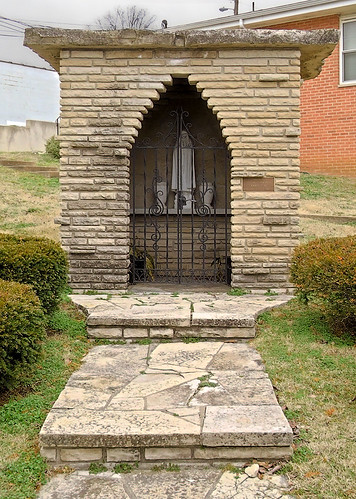
Outside of the church is a Marian shrine.
UPDATE: newer photos can be found on View from the Back Pew.
Address:
504 South Third Street
De Soto, Missouri 63020


Were the confessionals always in a separate building or was this part of the post-Vatican II remodeling? Also, do you have any pics of the confessionals?
ReplyDeleteAs usual, these are great pictures! Thanks for posting!
Good question, and I don't know.
ReplyDeleteThe statue of Saint Rose is in the separate building, with the doors to the confessionals on either side of it: I cropped the doors out of this photo.
Beautiful photos. What camera do you use?
ReplyDeleteI use a ridiculously cheap Fujifilm FinePix S5200, but that is only due to my current financial limitations. It is a good camera, but would not be my first choice. It is good enough for what I do, though!
ReplyDeleteI bought it to replace my far more expensive Minolta Dimage 7 digital camera. Out of the camera, the Fuji produced higher-quality images than the Minolta. I was always disappointed in the quality of the Minolta photos, and it even killed my interest in photography for many years.
However, I upgraded my photo editing software from Photoshop Elements to Photoshop CS3, and the new software handled the old Minolta images better. Immediately I was able to see that the optics on the old Minolta were far superior to the new Fuji.
I have to spend a few minutes in Photoshop on each Fuji photo to correct for lens defects. Even if not corrected, the defects wouldn't be all that visible on the small photos on this website.
The Fuji sensor and electronics are superior to that of the Minolta, and display far less noise and better image conversion. However, for both cameras, interior photos require the use of a tripod and special processing in order to reduce the amount of visible noise. It is for that reason that I do not photograph liturgies: the short shutter speed required to prevent blurring of people requires a boost in sensor sensitivity, which generates so much noise as to make the images unusable.
Thanks for your reply. Do you use a special feature in Photoshop to get such rich, bright colors on the statue of St. Joseph and the altar photo? I have rarely seen digital pictures with such coloration.
ReplyDeleteThe most important thing to do to have good color is to have accurate white balance. I typically set the white balance on the subject, and then fine-tune it in Photoshop using Curves.
ReplyDeleteThe key concept is to make objects that are white, gray, or black in reality, appear the same in the final photo. Having good white balance is one of the things that turns a good photo into an excellent photo.
I use the Curves tool in Photoshop to bring out color and detail. I make sure that I use the full scale of tones, from bright white to deep black, and attempt to prevent over- or underexposing any particular significant color. I bring out the detail in the most significant parts of the image, at the expense of less significant parts.
Typically, I attempt to display objects as if they were illuminated with brilliant, pure white lighting, and to bring out color detail that would be visible if you were standing close to the object.